Mission Impossible
On paper, this is mission impossible.
Shoma Uno and his ensemble—seven skaters, and only seven—were tasked with filling a 90-minute ice show. No singers, no dancers, and almost no intermissions.
Yet as the stage lights shifted, Shoma, golden-haired, appeared at center ice—a dawn breaking through darkness. Dressed in a stylish, form-fitting patent leather costume adorned with metallic accents and featuring one exposed arm, he exuded relaxed confidence. After greeting the audience up close, he executed a lofty, seamless triple Axel—no one seemed to notice he was wearing ice dance blades. The remaining six skaters soon joined, moving in sync with the pulsing drums, shifting formations in perfect unison with the music’s dynamics and melody, forming a cohesive force orbiting Shoma. The audience’s cheers resounded, wave after wave.
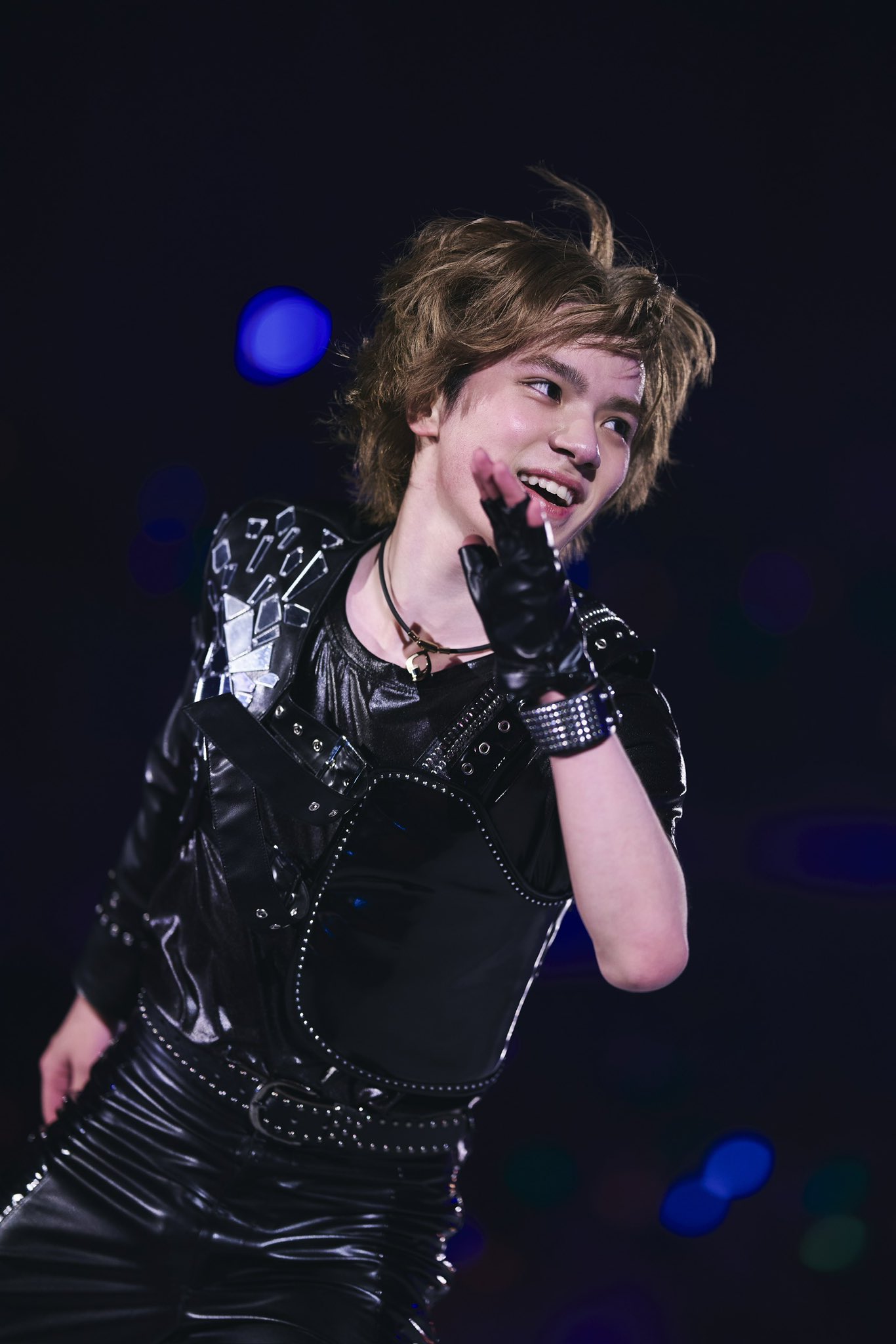
Throughout these 90 minutes, Shoma and his team transformed the rink into the very center of the world for everyone present.
A Show Built on Personal Journey and Vision
Ice Brave unfolds on two narrative layers:
Thematically, nearly all the programs are ones Shoma performed during his competitive career, with the cast itself forming a living retrospective of his journey on ice. Visually, the show is a stunning tableau—in various colors and shapes, yet miraculously harmonious.
At 27, Shoma took on the role of producer for the first time, overseeing every aspect from planning and choreography to casting. Finally, he could create without the constraints of a rulebook. In the first act’s “Loco,” dressed in sheer black, he radiated confidence.
As reported by Sportiva (source), Shoma remarked:
"I was quite fond of the original 'Loco,' but I felt I couldn’t reach the same level of quality as back then. However, as time passed, I began to think that I could now express a new version of 'Loco' unique to who I am today. Along with that, for 'Ice Brave,' I really wanted to include many programs that represent various milestones and memories from my life, as well as pieces that would evoke memories for the audience."
Equally striking was his approach to the quartet number "Narco." Rather than seeking the spotlight, Shoma worked tirelessly in rehearsals with Yoji Nakano, Tsunehito Karakawa, and Kazuki Kushida, exploring how to interpret the music and adjust nuances in rhythm to captivate the audience. The result was a powerful, unified quartet on ice.
Ice Dancer Shoma Uno and the one and only Marin Honda
Perhaps the most tender moment was his ice dance with Marin Honda. Shoma began training with ice-dance blades as early as October 2024. Together, they completed side-by-side twizzles, dance spins, and both straight-line and rotational lifts. Whether at the music’s climax—hand in hand, Shoma gliding in a grand spread eagle while Marin executed her perfect spiral—or sharing a glance during transitions, they radiated a palpable sense of love.
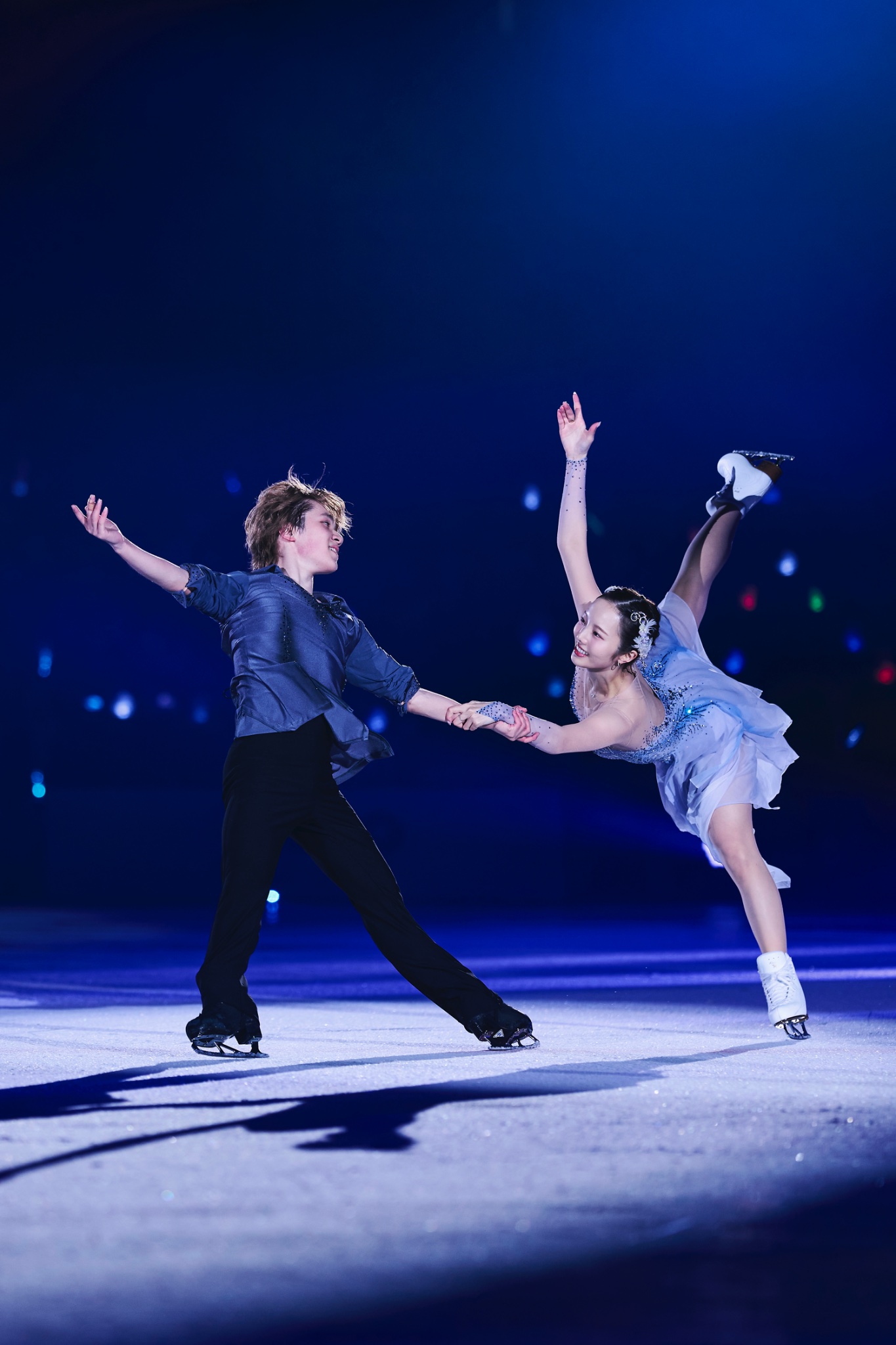
Marin possesses the classic beauty, innocence, and delicacy expected of a top female skater from Asia, but her allure far exceeds her appearance. When she skates, an incredible resilience and determination emanate from her willowy frame. She is truly a well of bravery. During lifts, her head and arms come perilously close to Shoma's sharp blades—an ever-present risk for the female partner in ice dance. Yet Marin, ever graceful, smiles serenely, leaping onto Shoma’s shoulder with balletic lightness, her arms tracing a perfect arc.
In this show, Marin demonstrated remarkable versatility—dressed in white, ethereal as a sprite alongside Rika Hongo, and later, in "Stairway to Heaven," donning a red dress to perform a Spanish dance, her innate rhythm and fluid, expressive movement captivating. She would pause for half a beat while lifting her crimson scarf, allowing the audience to savor a dancer’s immersion in music.
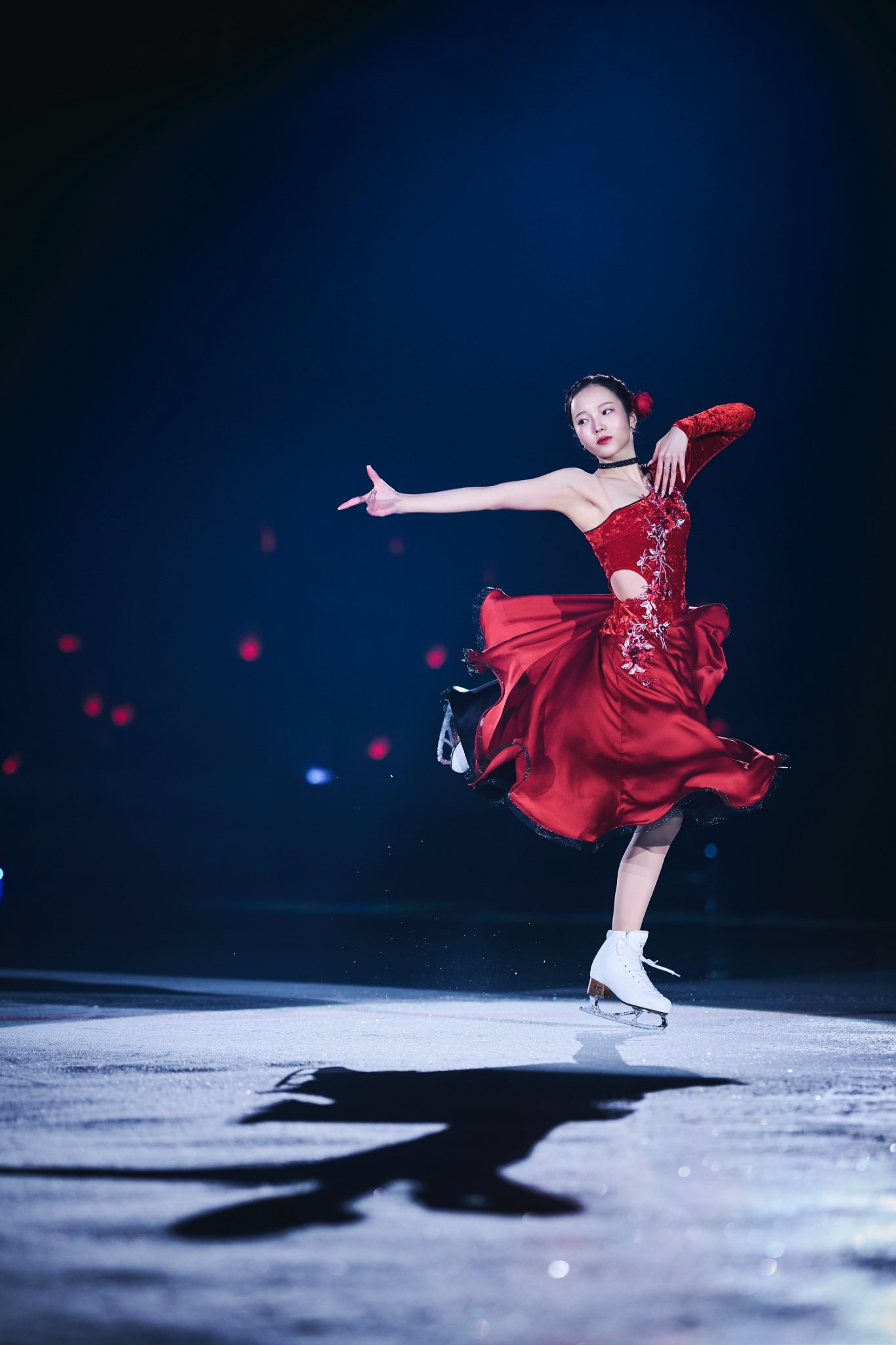
Marin also shared an interesting insight about Shoma in this report of Sportiva (source):
“Ordinary athletes get anxious when they can’t do something in practice and just want to be able to land their jumps at competitions. That’s why nerves and anxiety come up. But Uno’s way of thinking is that if he couldn’t do it in practice, he won’t feel frustrated about it in competition either. I think that’s a mindset he’s developed through years of competing as an athlete in various places.”
Shoma never appeared afraid during his competitive days, and that hasn't changed. During the matinee encore, he landed a flawless quad jump without hesitation, sending the crowd into a frenzy. Among the six skaters behind him, one nearly leapt from a crouch, fists raised in joy—happier than if he had landed the jump himself.
That was Stéphane Lambiel.
The Depth of Shadows: Stéphane Lambiel
Stéphane’s contributions to this tableau were both atypical and profound. Most audiences are drawn to highlights—the dazzling moves, the electric energy. But the true depth of a show comes from its shadows. Only when the shadows are deep enough does the painting come alive with three-dimensional vitality; only when a performance dares to touch the deepest notes do the brightest moments truly shine.
“Time Lapse/Spiegel im Spiegel” is a masterpiece choreographed by Kenji Miyamoto. Stéphane chose the most faithful—and also the most challenging—approach to this piece. First of all, it’s a full-length free skate, demanding both technical mastery and stamina, not to mention that Stéphane participated in seven numbers per show—including two solos—sometimes twice a day. Meanwhile, the music itself offers little variation in tone or rhythm; its interwoven melodic lines leave almost no room for error. This is a formidable challenge—and Stéphane thrives on challenges. He executed multiple triple jumps, skated with impressive speed, and finished with flawless spins. At every moment, he maintained remarkable precision, and as the melody repeated, he revealed subtle shifts in interpretation, all while sustaining an air of depth and composure. Perhaps most astonishing of all, his movements draw you in silently but powerfully—not through the sheer visual impact of his early years, but through letting emotions linger, burn slowly, and bloom in the quietest shadows of the ice.
The vitality Stéphane brings to this show doesn’t go unnoticed, either. Entering with a cartwheel—a move he rarely, if ever, attempted according to his fans—he seemed completely rejuvenated, breaking free from his coach persona. In his collaborations with Shoma, the two inspired and elevated each other; in “Bolero,” they quite literally lifted one another. In the Sunday performance of “Gravity,” his self-choreographed piece, Stéphane radiated his signature flair and allure, his shirt flying up to reveal beautifully defined abs. In “Time after Time,” he blended jazz influences with ease, adding a dash of theatricality as he mimed pouring a drink.
In this show, Stéphane gave everything he had, holding nothing back—not to showcase himself, but to help realize Shoma’s vision. He channeled a wide range of energy—from angelic to poetic, rock-inspired, romantic, nurturing, and even playful, as a dashing maitre d’ dancing with a lovely young lady.
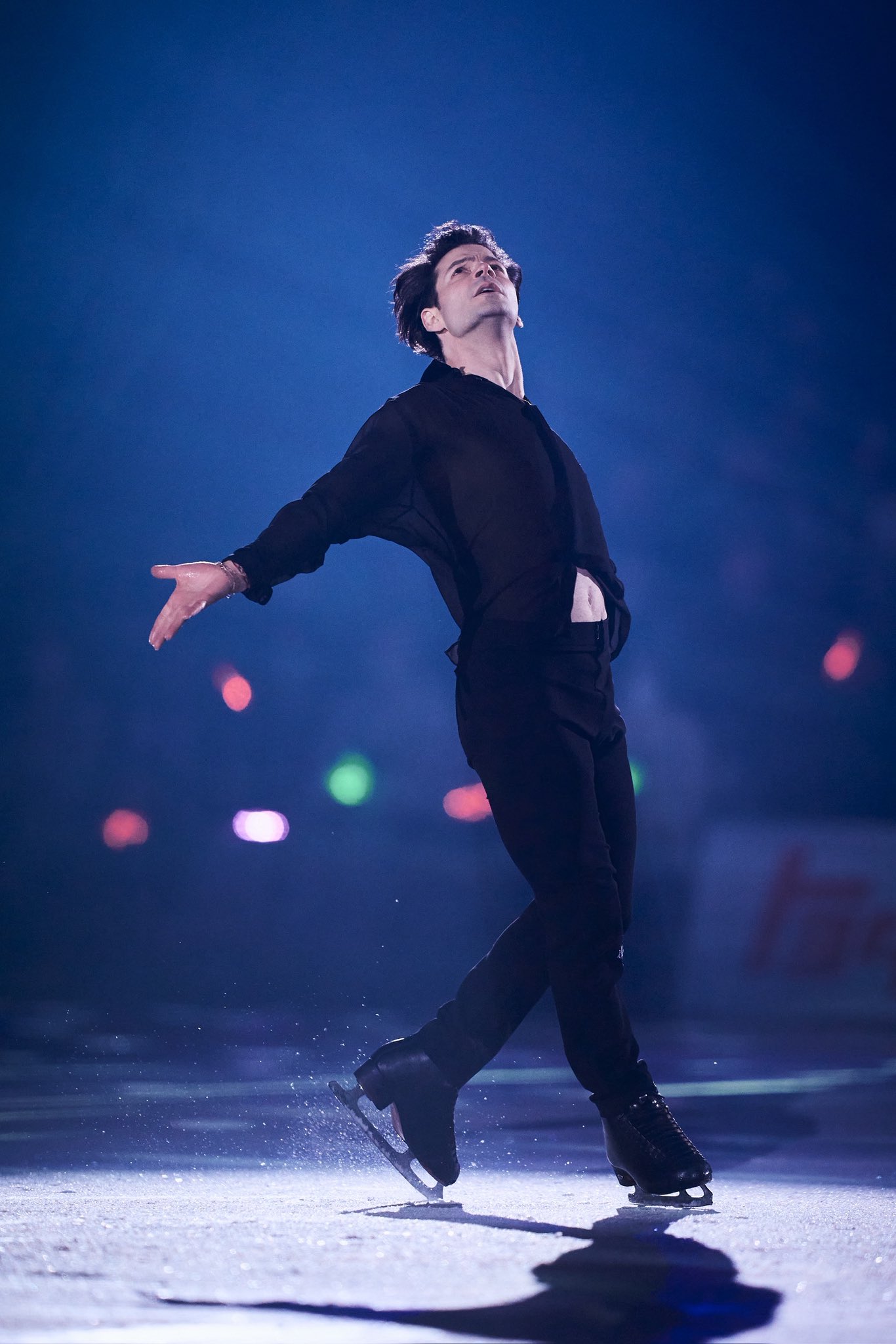
Spirit Unleashed
That lovely dance partner was Rika Hongo, who revealed theatrical gifts long hidden by competitive constraints. In "La Vie En Rose," she played an adorable, slightly feisty schoolgirl, her personality luminous. In "Dancing on My Own," she brought a meta-theatrical twist.
Her solo, "Riverdance," required intense musicality. On ice, the solo adaptation demanded even greater physicality. Her explosive, assertive movement filled the arena with an infectious energy; at the final note, the audience was left breathless.
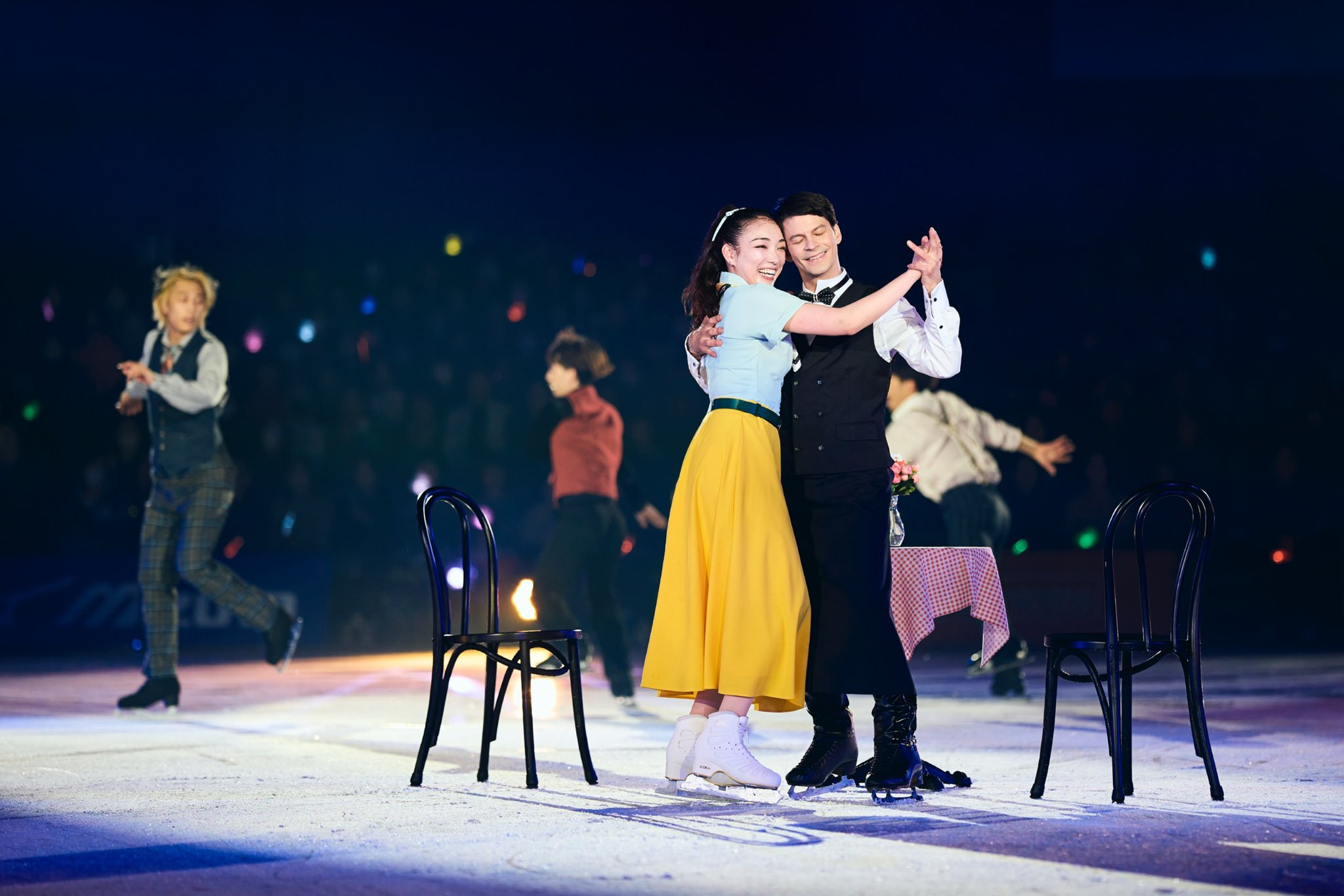
The trio—Yoji Nakano, Tsunehito Karakawa, and Kazuki Kushida—were equally impressive. Whether it was Yoji's daring backflip, Tsunehito's "Tanguera," or their Michael Jackson medley, they consistently engaged the audience’s emotions. Clearly, their backstage efforts were immense.
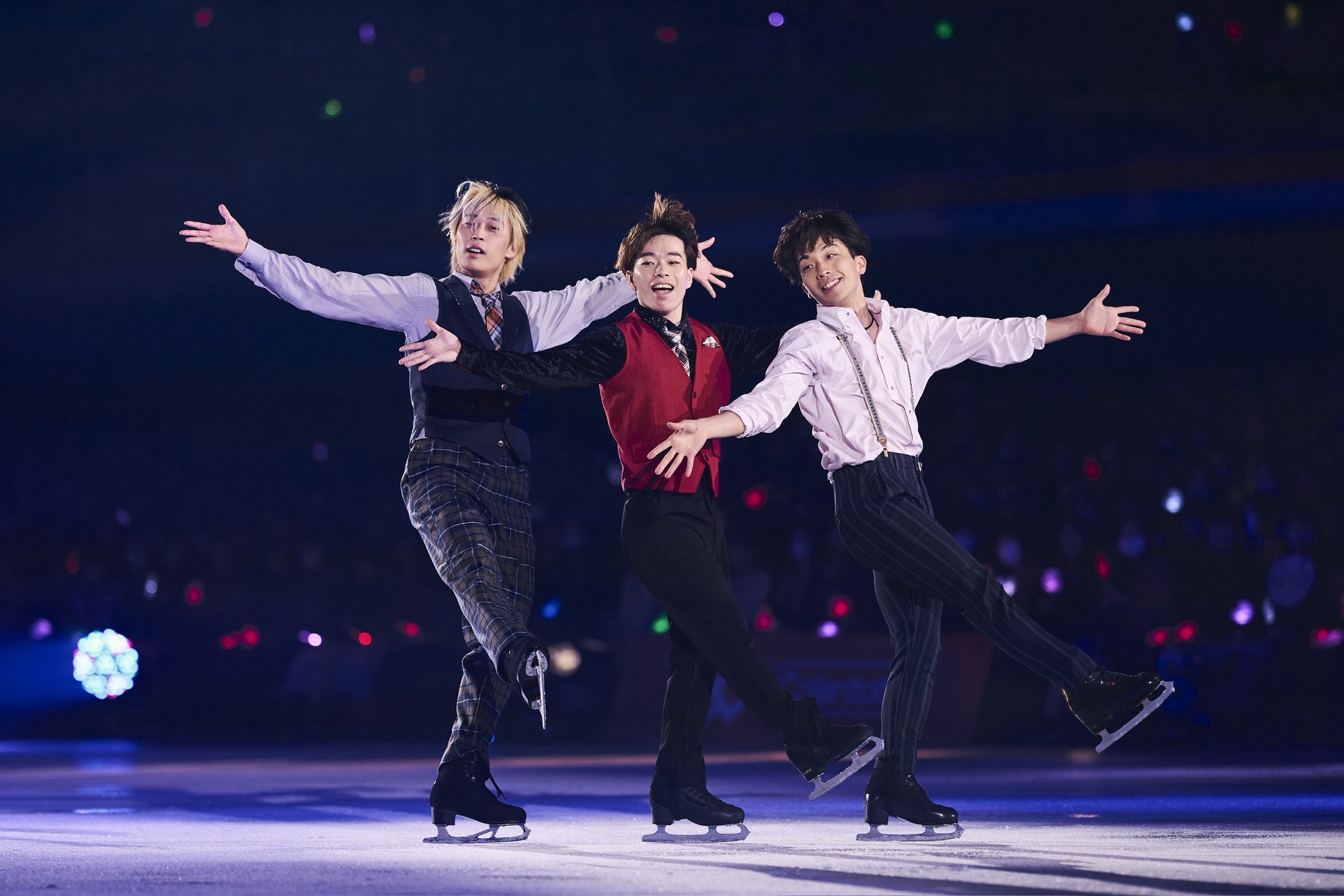
Backstage and Atmosphere
The backstage team also deserves high praise. The makeup accentuated each skater’s strengths. The lighting design was dazzling, with the massive ICE BRAVE sign shining above. Most impressively, the visual palette was refined, never garish, and the show’s pacing was impeccable. "Bolero" would begin a few minutes before showtime, and skater transitions were seamless, with almost no curtain calls or awkward pauses.
The costumes, in particular, were exceptional—tailored to flatter each skater, crafted with the sophistication of a world-class concert. The designs enhanced each program’s theme: Marin’s red dress was stunning, the "Bolero" costumes sparkled like angels, and even the opening’s black leather and metallics were individually tailored—Shoma’s revealed one arm, Rika’s cropped top was fashion-forward, Marin’s bared a graceful shoulder, adorned with extra metal accents, and Stéphane wore a rockstar’s fingerless glove.
The audience was exuberant, waving glowsticks and clapping in rhythm to every beat. Yet during poignant programs, the silence was so deep you could hear blades cut the ice.
Beyond the emotional highs, Ice Brave demonstrated how a small cast and carefully curated programs can deliver a show more compelling than larger, more lavish productions.
Looking back, this “impossible mission” was made not only possible but unforgettable under Shoma’s leadership. First-row tickets were sold out, and resale prices soared to double their face value. Extra S seats and even standing tickets were added for the final show.
According to Twitter user miki__fs’s live report:
Shoma: “I have some sad news for everyone… Ice Brave is coming to an end today, but…Ice Brave II will be held! Details will be released on 18th (July). Save the tears for another time!”
Classic Shoma Uno — delivering news with his trademark deadpan humor.
In the end, as he returned alone for the curtain call, we saw the words emblazoned on his jacket:
“MY BRAVERY IS BUILT BY THOSE WHO STAND WITH ME.”
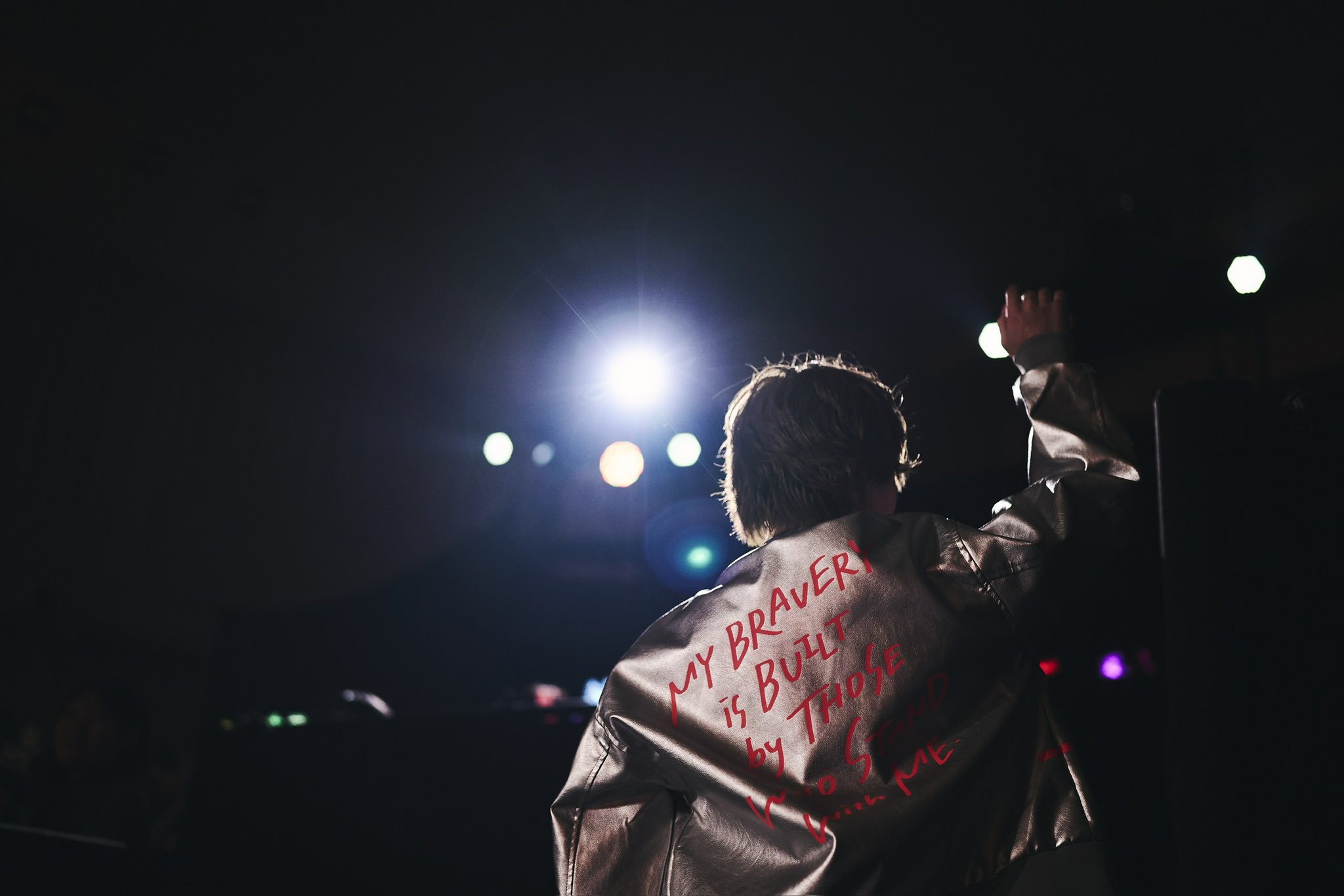
Full Cast and Program List
Program:
- Great Spirit - All skaters
- Come Together - Shoma Uno, Marin Honda, Rika Hongo, Yoji Nakano, Tsunehito Karakawa & Kazuki Kushida
- ~MC~
- Legends - Shoma Uno & Stéphane Lambiel
- La Vie en Rose - Rika Hongo & Yoji Nakano
- Time after Time - Rika Hongo, Yoji Nakano, Kazuki Kushida, Tsunehito Karakawa & Stéphane Lambiel
- Tanguera - Tsunehito Karakawa, Shoma Uno & Marin Honda
- Stairway to Heaven - Marin Honda
- Buenos Aires Hora Cero / Balada Para un Loco - Shoma Uno
- Gravity - Stéphane Lambiel
- “Winter” from The Four Seasons - Marin Honda & Rika Hongo
- Narco - Shoma Uno, Yoji Nakano, Kazuki Kushida & Tsunehito Karakawa
- ~MC~
- Michael Jackson Medley - Yoji Nakano, Kazuki Kushida & Tsunehito Karakawa
- Riverdance - Rika Hongo
- Time lapse/Spiegel im Spiegel - Stéphane Lambiel
- Wild Side - Shoma Uno & Marin Honda
- Dancing On My Own - Yoji Nakano, Rika Hongo, Kazuki Kushida
- Bolero - All skaters
- See You Again - All skaters
Costume: nju costume
Skaters: Shoma Uno, Stéphane Lambiel, Marin Honda, Rika Hongo, Yoji Nakano, Tsunehito Karakawa & Kazuki Kushida
Note: This article is based on performances in Fukuoka, June 21st & 22nd.

